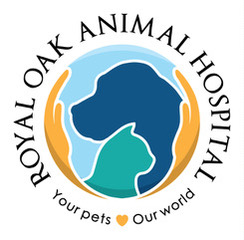Library
-
If your cat is having diarrhea, please complete this questionnaire as accurately as possible before your appointment. This information will be very helpful to your veterinarian in determining the cause of diarrhea.
-
Ear infections are less common in cats than dogs, and it is essential to determine the underlying cause. Ear mites are the most common cause, but tumors or foreign bodies may also be present. Your veterinarian will need to examine your cat and likely perform tests to determine the best course of treatment. The prognosis is good if the underlying cause is diagnosed and treated.
-
The ear mite is a surface mite that lives on cats, dogs, rabbits, and ferrets. It is usually found in the ear canal but it can also live on the skin surface. Mites are barely visible to the naked eye. Clinical signs of infestation vary in severity and may include ear irritation, leading to scratching at the ears or head shaking, dark waxy or crusty discharge from the ear, areas of hair loss resulting from self-trauma, a crusted rash around or in the ear, and an aural hematoma. Your veterinarian will advise you about which insecticidal products are suitable. Your veterinarian may want to re-examine your pet to ensure that the mites have been eliminated after the initial treatment has been performed.
-
Eclampsia in cats is a rare emergent condition of hypocalcemia that generally occurs one to four weeks after giving birth but can occur before. Risk factors include a poor diet, abnormal parathyroid gland, and calcium supplementation during pregnancy. Signs of eclampsia start as restlessness, panting, and stiffness and can progress to disorientation, tremors, inability to walk, and convulsions. Treatment includes intravenous fluids, careful intravenous calcium supplementation, and other supportive medications followed by oral supplementation and weaning kittens as soon as possible or supplementing their diet with milk replacer.
-
Endocarditis is an infection of a heart valve, most often affecting the mitral or aortic valve. It can arise any time that bacteria enter the bloodstream, though it is more common when the heart valve has already been damaged for some other reason. The clinical signs of endocarditis are often nonspecific in the early stages, but may progress to include signs of heart failure later in the course of the disease. The diagnosis and treatment of endocarditis can present a challenge, requiring multiple tests and prolonged courses of antibiotic therapy.
-
Heart Disease in Cats
Las enfermedades cardíacas son condiciones muy graves tanto en perros como en gatos, y como en personas. Los gatos normalmente no desarrollan arterioesclerosis o enfermedades de las arterias coronarias, como ocurre comúnmente en los humanos.
-
Congestive Heart Failure in Dogs
La insuficiencia cardiaca es la incapacidad del corazón para mantener un aporte de sangre suficiente para satisfacer las necesidades del organismo. Una insuficiencia cardiaca suele reflejar un fallo del músculo cardiaco (insuficiencia miocárdica), que puede afectar al ventrículo izquierdo o al derecho.
-
Heartworm Disease in Cats
El gusano del corazón es un parásito de la sangre llamado Dirofilaria immitis que reside en el corazón o en los grandes vasos sanguíneos de los animales infectados.
-
Eosinophilic granuloma complex is a term used to describe three forms of skin lesions in cats including eosinophilic plaque, eosinophilic granuloma, and indolent ulcers. The lesions most commonly occur on the lip, sometimes resulting in disfigurement, but can also develop in the mouth or on other areas of the body.
-
Feline eosinophilic keratitis is a chronic inflammatory disease of the cornea that results in the surface of the eye appearing pink, white, or chalky. It is caused by an accumulation of inflammatory cells called eosinophils. The clinical signs, appearance, diagnosis, and treatment of this condition are explained in this handout.


